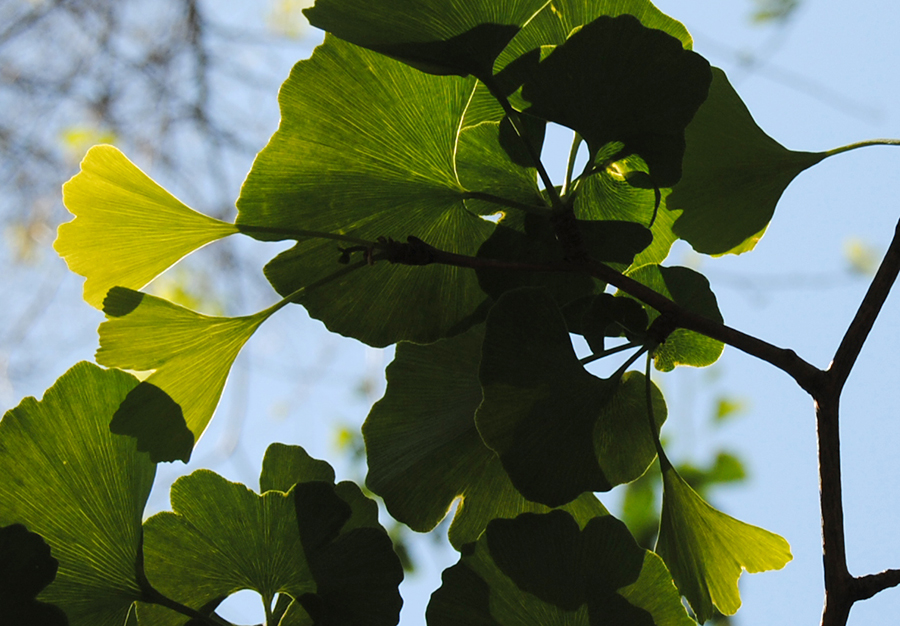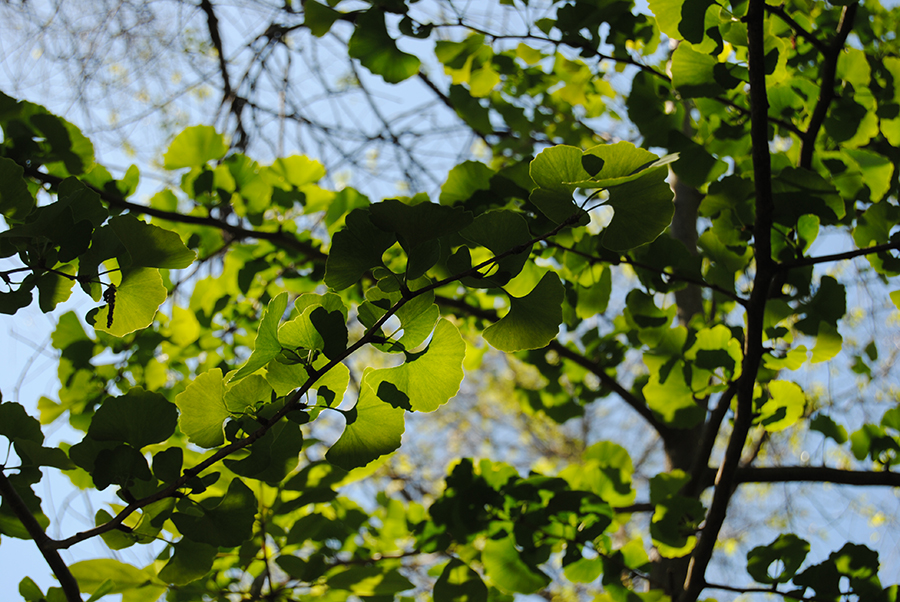
Ginkgo
Ginkgo biloba
Family and description
Member of the Ginkgoaceae family, ginkgo is a deciduous tree that can grow to a height of 35 m.
The crown is usually irregular, tending towards pyramidal in shape.
It is a dioecious species – some individuals are male and others are female.
The leaves are alternate, simple, fan-shaped and have a long stalk. Sometimes a cut divides the leaves (lobes) in half, a characteristic that gave rise to the scientific name “biloba”. The leaf veins are also fan-shaped. The leaves are green, becoming an intense golden yellow colour in the autumn before they fall.
Reproduction takes place in March or April. On the male trees, the reproductive leaves are discreet, conical yellow catkins grouped in bunches. The female ovules appear at the same time as the leaves. The seeds, which look like yellow plums, ripen in autumn, on the female trees. They are round and hang from long peduncles individually or in pairs. These, containing butyric acid, have a rather unpleasant odour.
Origin and habitat
Ginkgo is a tree from Southeast China, the only known place in the world where specimens still grow in the wild and reach an extraordinary size. In Portugal, it is planted in gardens, parks and on some streets. It prefers areas with plenty sun exposure that are well-watered, well-drained and with slightly acidic soils. It can be found in places as diverse as riverbanks or rocky slopes. Deep-rooted, they are usually quite wind-resistant trees.
Uses and curiosities
This species is one of the oldest on earth. Fossils of tree parts of this genus, that is over 100 million years old, are known.
It is a species that has the ability to generate shoots from the base of the trunk and can also produce aerial roots in response to canopy disturbances, from which the plant can give rise to new clones. These strategies justify the tenacity of this species, with specimens which have been documented as having resisted the explosion of Hiroshima.
Traditional Chinese cuisine uses the interior of ginkgo seeds in dishes served on special occasions.
It is a plant widely used for its medicinal properties, namely for improving cognitive function and memory.

